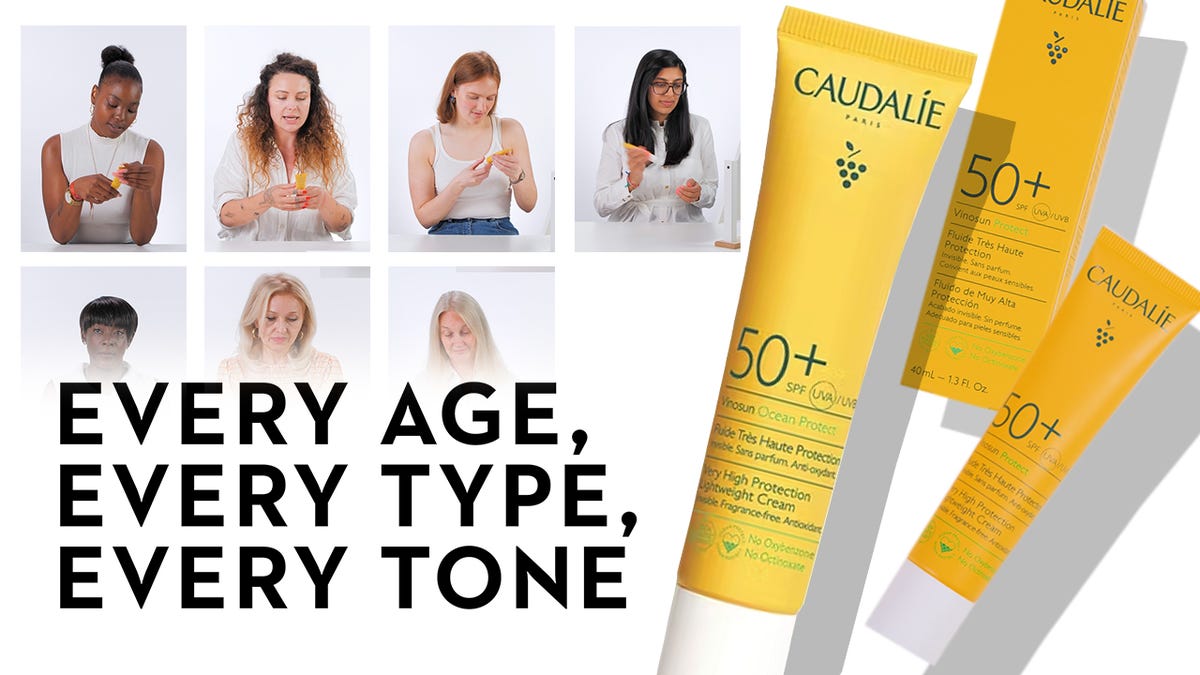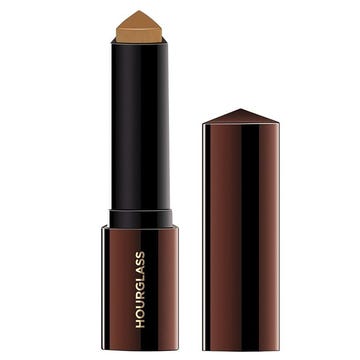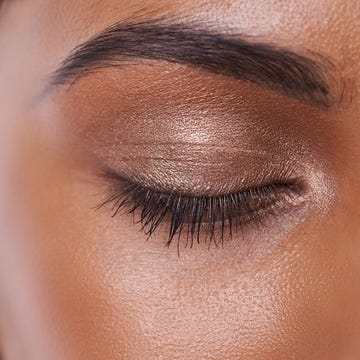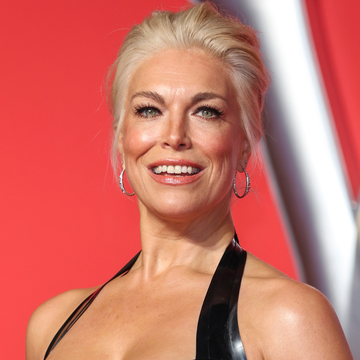We earn a commission for products purchased through some links in this article.
Yes, full coverage foundations CAN flatter mature skin. These are the best ones for every skin type
Our top 12 picks from the high street to high end, covering all bases

As someone who only ever wears a full face (I have no concept of minimalist makeup), I’ve found myself defending my love of full coverage foundations time and time again. I get it. Whether it’s because the phrase ‘full coverage’ still sparks memories of the cakey offerings of the early 2000s, or because those with dry or mature skin feel obligated to opt for something lighter, the full coverage corner of the foundation world has been left to gather dust. Especially given the recent rise of barely there skin tints and serum-style formulas, my preference raises a lot of eyebrows.
At least, until I explain how today’s offerings aren’t at all what they once were. The newest variation of breathable, skin-loving and, most importantly, hydrating full coverage foundations have worked hard to repair their reputation. Now with expertly designed formulas (so they’re just as weightless as they are pigmented), there’s quite literally a full coverage choice for all ages and skin types – from oily to dry to those with acne-prone or textured skin.
When you need an extra oomph in your base, full coverage foundations (with clever application) are the key to a polished, long-lasting base. Read on for our guide to the best full coverage foundations for every need and every price point.
What are the benefits of full coverage?
When you think of full coverage, the opportunity to perfect your skin with minimal effort is usually the first thing that comes to mind. ‘And while the most important benefit is a full coverage foundation’s ability to conceal any unwanted blemishes, pigmentation and imperfections, it also gives you a blank canvas to be creative with blushes and bronzers on top,’ explains Mel Trierweiler, makeup artist for Revolution Beauty.
Many modern full coverage foundations are also packed with skin-loving ingredients. ‘It’s even better if you can find one with SPF, to aid your protection from the sun throughout the day,’ adds Mel.
Forget what you may assume about their texture as well. ‘Many people also think that full coverage means the foundations are thick, but it’s quite the opposite,’ explains Dominic Skinner, director of makeup artistry at MAC. Instead, he says, a fuller coverage can simply offer a seamless, smooth and longer-lasting finish, whatever the occasion.
Whether you’re after a standout look for an event or just a solid base to endure a long work day, Givenchy makeup artist Claire Mulleady agrees that coverage is key. ‘A full coverage foundation will make your skin look absolutely flawless, so although it’s especially great for a night out, it’s versatile enough to be just as easily worn all day with some good skin prep.’
What should I look for in a full coverage foundation?
Although modern foundations come in fancy new stick, powder and serum formulations, Dominic recommends sticking to your roots with a liquid. “You’ll still be able to find one that is familiar to you, as full coverage comes in many different formulas now. However, liquid foundations will be the best for full coverage, as you can both layer and use a finishing powder to maximise coverage as you need.’
When shopping for a full coverage foundation, Mel says it’s essential to consider both your skin type (think oily, dry, mature) and your desired look (whether you’re looking for dewy or prefer to keep things matte).
‘If you’re hoping to cover blemishes and imperfections or have oily, acne-prone skin, make sure you opt for an oil-free foundation to control oil production throughout the day. You can also consider a matte or semi-matte finish, as this can aid oil control while seamlessly covering any unwanted areas.’
For dry or combination skin, Mel turns to hydrating formulas. ‘Look out for ingredients such as hyaluronic acid, glycerin or squalane, as these will help to nourish any drier areas and avoid any patches where the product can cling.’
Skincare-infused foundations are also the key to achieving full coverage without looking like you’re wearing a mask. ‘Foundations that contain lots of skincare ingredients allow the skin to still look very skin-like, rather than leaving a flat and lifeless complexion,’ explains Claire. ‘They build into full coverage without compromising on the look of healthy, plumped skin.’
Will a full coverage foundation work on mature skin?
The short answer is yes – but for fine lines and skin texture, strategy when it comes to product choices and application is key.
As for the long answer, Mel advocates for hydration for mature skin, both in a foundation and under it. She explains: ‘Full coverage foundations can work really beautifully on maturer skin, but preparation is important. By hydrating the skin beforehand [look to GH’s guide to the best moisturisers and our favourite serums] you can ease application, achieve a more flawless finish and avoid an overly cakey look.’
Dominic explains that he also likes to start with minimal product and work in layers on mature skin: ‘Work slowly and build up only where you feel you need the most coverage.’
And by prolonging it with a blurring powder afterwards, you both help to set the foundation and reduce the appearance of fine lines and pores, he adds.
How should I apply a full coverage foundation?
Whatever your preference when it comes to makeup tools, a full coverage foundation should be versatile enough to be applied with ease. ‘For me, makeup sponges are best, as they help to layer and gradually build up the coverage of the foundation,’ says Dominic.
‘Just make sure you use a little setting spray – like MAC’s Fix+ – to dampen the sponge first and get the smoothest, freshest finish.’ By wetting your sponge first, you can also ensure that any excess product is absorbed, which again prevents any unflattering cakeyness.
Dense brushes are Claire’s preferred option, however. ‘They push the foundation into the skin and are then easily able to buff it in. It can then help to soften the application by going over the top with a beauty blender afterwards, to keep the skin looking skin-like.’
With your toolkit ready, Mel’s simple three-step process will achieve a flawless finish.
- Preparation
‘Preparation is key when applying a heavy product, so your skin must be hydrated,’ she explains. ‘Even if you have an oily skin type, hydration ensures a seamless application and avoids any product slipping or clinging in certain areas.’
2. Application
Dominic says that a full coverage foundation should offer an even tone with just a small amount: ‘It’s about maximum results with minimal product.’ This way, ideally you won’t be able to feel it on the skin and it won’t feel heavy.
'Build in layers,’ echoes Mel. ‘Use a buffing brush to have full control over the distribution of the product and pay special attention to the areas that might need extra coverage. Then, if you notice any brush streaks, buff out with a damp sponge.’
3. Setting
‘To set, allow the product to sit for one to two minutes before proceeding with a lightweight, fine powder for those with dry or mature skin,’ says Mel. ‘This locks in the product while not ruining the base you’ve achieved by making it look cakey.’
For oily and combination skin, a translucent or oil-absorbent powder is best. ‘Use a light, fluffy brush for larger areas, such as the forehead and cheeks, and a powder puff for more concentrated areas like under the eyes and around the nose and mouth.’
Mel recommends finishing with a hydrating setting mist to melt the look together and help remove any visibly powdery areas.


How to remove waterproof mascara gently

The best makeup organisers for 2025

Foundation sticks give glowy skin in a swipe

Eyeshadow sticks are our new easy makeup must-have



















